Showing Spotlights 41 - 48 of 77 in category All (newest first):
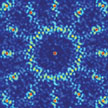 Organic solar cells are regarded as an emerging technology to become one of the low-cost thin-film alternatives to the current dominating silicon photovoltaic technology, due to their intrinsic potential for low-cost processing (high-speed and at low temperature). However, it is generally believed that the PCE needs to be improved to above 10% in order for organic solar cells to become truly competitive in the marketplace. Currently, the best reported PCE, achieved in laboratories, lies in the range of 6.7% to 7.6% for molecular, and 8.3% to 10.6% for polymeric OPVs.
Organic solar cells are regarded as an emerging technology to become one of the low-cost thin-film alternatives to the current dominating silicon photovoltaic technology, due to their intrinsic potential for low-cost processing (high-speed and at low temperature). However, it is generally believed that the PCE needs to be improved to above 10% in order for organic solar cells to become truly competitive in the marketplace. Currently, the best reported PCE, achieved in laboratories, lies in the range of 6.7% to 7.6% for molecular, and 8.3% to 10.6% for polymeric OPVs.
Mar 13th, 2013
 Many researchers are investigating the development of flexible solar cells in hopes of improving efficiency and lowering manufacturing costs. As an important member of the organic photovoltaics family, polymer solar cells draw the most research interest, due to the relatively high power conversion efficiency achieved. However, compared to the high efficiencies of inorganic solar cells, the best polymer solar cells still show a lower efficiency. Improved nanomorphology is seen as key to improving the efficiency of organic solar cells. One particular nanotechnology approach would use nanoimprint lithography to produce precisely nanostructured devices rather than using chemical methods of manufacturing.
Many researchers are investigating the development of flexible solar cells in hopes of improving efficiency and lowering manufacturing costs. As an important member of the organic photovoltaics family, polymer solar cells draw the most research interest, due to the relatively high power conversion efficiency achieved. However, compared to the high efficiencies of inorganic solar cells, the best polymer solar cells still show a lower efficiency. Improved nanomorphology is seen as key to improving the efficiency of organic solar cells. One particular nanotechnology approach would use nanoimprint lithography to produce precisely nanostructured devices rather than using chemical methods of manufacturing.
Jan 24th, 2013
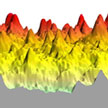 Energy-relevant materials like selenium have photovoltaic and photoconductive properties that make them interesting for the manufacture of solar cells and lighting devices. In most of these applications, as with all nanomaterials, the material surface plays a critical role. Therefore, their surface properties, and more particularly their solid surface energy - the energy required to create a new surface - have to be carefully determined in order to fully understand and control relevant manufacturing parameters for devices based on these materials.
Energy-relevant materials like selenium have photovoltaic and photoconductive properties that make them interesting for the manufacture of solar cells and lighting devices. In most of these applications, as with all nanomaterials, the material surface plays a critical role. Therefore, their surface properties, and more particularly their solid surface energy - the energy required to create a new surface - have to be carefully determined in order to fully understand and control relevant manufacturing parameters for devices based on these materials.
Dec 11th, 2012
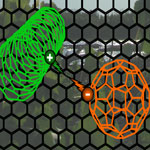 It was previously thought that carbon nanotubes and other carbon nanomaterials are not well suited to make efficient solar cells. The main reason for this is that nanotubes are hard to isolate in single chiralities or in a given diameter range and only of semiconducting or metallic type, and thus it is hard to use them in a controlled way. New work has now shown that thin film solar cells made entirely out of carbon nanomaterials can achieve an efficiency similar to that of polymer solar cells at their initial research stages (a decade ago), but with much improved photostability. As a result, the use of carbon materials holds great promise towards the realization of photostable thin film solar cells.
It was previously thought that carbon nanotubes and other carbon nanomaterials are not well suited to make efficient solar cells. The main reason for this is that nanotubes are hard to isolate in single chiralities or in a given diameter range and only of semiconducting or metallic type, and thus it is hard to use them in a controlled way. New work has now shown that thin film solar cells made entirely out of carbon nanomaterials can achieve an efficiency similar to that of polymer solar cells at their initial research stages (a decade ago), but with much improved photostability. As a result, the use of carbon materials holds great promise towards the realization of photostable thin film solar cells.
Sep 27th, 2012
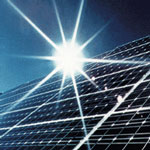 The significant research interest in the engineering of photovoltaic (PV) structures at the nanoscale is directed toward enabling reductions in PV module fabrication and installation costs as well as improving cell power conversion efficiency. With the emergence of a multitude of nanostructured photovoltaic device architectures, the question has arisen of where both the practical and the fundamental limits of performance reside in these new systems. A particular advantage of nanostructured materials is the tunability of their optical and electronic properties, which enables improved PV power conversion efficiencies by implementing strategies for reducing thermal losses. A recent review article addresses the limits to the performance of molecular, organic, polymeric, dye-sensitized, and colloidal quantum dot-based solar cells.
The significant research interest in the engineering of photovoltaic (PV) structures at the nanoscale is directed toward enabling reductions in PV module fabrication and installation costs as well as improving cell power conversion efficiency. With the emergence of a multitude of nanostructured photovoltaic device architectures, the question has arisen of where both the practical and the fundamental limits of performance reside in these new systems. A particular advantage of nanostructured materials is the tunability of their optical and electronic properties, which enables improved PV power conversion efficiencies by implementing strategies for reducing thermal losses. A recent review article addresses the limits to the performance of molecular, organic, polymeric, dye-sensitized, and colloidal quantum dot-based solar cells.
Feb 23rd, 2012
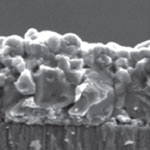 While the current solar panel market is still dominated by crystalline silicon solar cells, thin-film solar cell technologies based on chalcogenides are dramatically increasing their market penetration. Apart from device performance, price volatility issues, rare earth elements scarcity issues, and potential environmental issues have raised some concerns about both CdTe and CIGS. A frontrunner in the search for the next generation of thin film photovoltaic materials are low-cost quaternary copper-zinc-tin-sulfide (CZTS) and copper-zinc-tin-chalcogenide (CZTSSe). Notably, these materials are composed of naturally abundant elements in the Earth's crust and have very low toxicity. New research show that there are other chemical routes that use much more benign solvents by demonstrating a simple and facile solution phase method to form CZTS thin film solar cell using commercially available precursors and non-toxic solvents with high yield.
While the current solar panel market is still dominated by crystalline silicon solar cells, thin-film solar cell technologies based on chalcogenides are dramatically increasing their market penetration. Apart from device performance, price volatility issues, rare earth elements scarcity issues, and potential environmental issues have raised some concerns about both CdTe and CIGS. A frontrunner in the search for the next generation of thin film photovoltaic materials are low-cost quaternary copper-zinc-tin-sulfide (CZTS) and copper-zinc-tin-chalcogenide (CZTSSe). Notably, these materials are composed of naturally abundant elements in the Earth's crust and have very low toxicity. New research show that there are other chemical routes that use much more benign solvents by demonstrating a simple and facile solution phase method to form CZTS thin film solar cell using commercially available precursors and non-toxic solvents with high yield.
Nov 18th, 2011
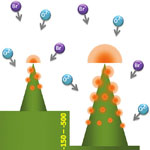 In recent years various bottom-up processes (such as growth techniques) and top-down processes (such as electron beam, lithography, nanoimprint) have been used to produce one dimensional nanostructure on semiconductor substrate. All these approaches involve nanoscale prepatterning or extreme fabrication conditions; hence, they are often limited by associated high cost and low yield. In a novel nanomanufacturing process known as Simultaneous Plasma-Enhanced Reactive Ion Synthesis and Etching (SPERISE), researchers have integrated both nanoscale bottom-up synthetic and top-down etching approach. This eliminates the expensive prepatterning steps and hence give rise to ultrahigh throughput, better reliability, high yield and above all, low cost.
In recent years various bottom-up processes (such as growth techniques) and top-down processes (such as electron beam, lithography, nanoimprint) have been used to produce one dimensional nanostructure on semiconductor substrate. All these approaches involve nanoscale prepatterning or extreme fabrication conditions; hence, they are often limited by associated high cost and low yield. In a novel nanomanufacturing process known as Simultaneous Plasma-Enhanced Reactive Ion Synthesis and Etching (SPERISE), researchers have integrated both nanoscale bottom-up synthetic and top-down etching approach. This eliminates the expensive prepatterning steps and hence give rise to ultrahigh throughput, better reliability, high yield and above all, low cost.
Oct 3rd, 2011
 Despites huge research funding for photovoltaics, contribution of solar cells to energy market is still negligible. The major obstacle is high production cost of silicon solar cells: current solar cell market is dominated by silicon technology. Bulky and rigid silicon solar cell with a power conversion efficiency above 10% and a lifetime of 25 years have become the benchmark in photovoltaic industry. However, there are plenty of scopes for disposable and inexpensive solar cells with a moderate efficiency and a shorter lifetime, which can be compared with plant leaves with a typical efficiency of 3-7% and a lifetime less than a year. Here is an example of research that was motivated to produce cheap and disposable solar cells with a moderate power conversion efficiency.
Despites huge research funding for photovoltaics, contribution of solar cells to energy market is still negligible. The major obstacle is high production cost of silicon solar cells: current solar cell market is dominated by silicon technology. Bulky and rigid silicon solar cell with a power conversion efficiency above 10% and a lifetime of 25 years have become the benchmark in photovoltaic industry. However, there are plenty of scopes for disposable and inexpensive solar cells with a moderate efficiency and a shorter lifetime, which can be compared with plant leaves with a typical efficiency of 3-7% and a lifetime less than a year. Here is an example of research that was motivated to produce cheap and disposable solar cells with a moderate power conversion efficiency.
Sep 26th, 2011
 Organic solar cells are regarded as an emerging technology to become one of the low-cost thin-film alternatives to the current dominating silicon photovoltaic technology, due to their intrinsic potential for low-cost processing (high-speed and at low temperature). However, it is generally believed that the PCE needs to be improved to above 10% in order for organic solar cells to become truly competitive in the marketplace. Currently, the best reported PCE, achieved in laboratories, lies in the range of 6.7% to 7.6% for molecular, and 8.3% to 10.6% for polymeric OPVs.
Organic solar cells are regarded as an emerging technology to become one of the low-cost thin-film alternatives to the current dominating silicon photovoltaic technology, due to their intrinsic potential for low-cost processing (high-speed and at low temperature). However, it is generally believed that the PCE needs to be improved to above 10% in order for organic solar cells to become truly competitive in the marketplace. Currently, the best reported PCE, achieved in laboratories, lies in the range of 6.7% to 7.6% for molecular, and 8.3% to 10.6% for polymeric OPVs.
 Subscribe to our Nanotechnology Spotlight feed
Subscribe to our Nanotechnology Spotlight feed





